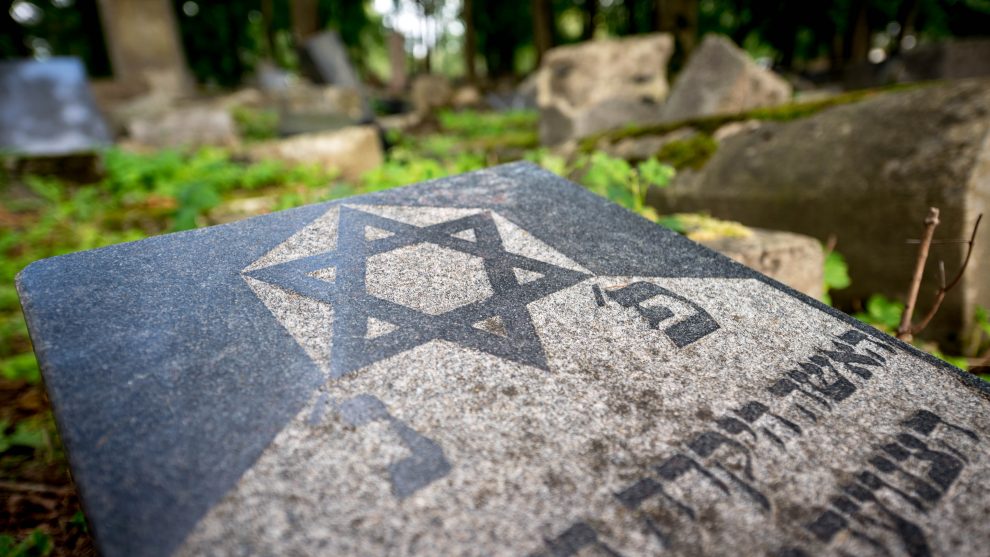Thousands of Ancient Jewish Tombstones Will Lie Down in the Virtual Picture Gallery

Paskelbta: 2016-10-06 (Thursday)
Students of Vytautas Magnus University joined the Kaunas initiative to revive the ancient Jewish cemetery in Žaliakalnis. Over a month-long photo recording works by which nearly 6 thousand tombstones were immortalized have been recently finished.
“We are grateful to the VMU community for such a benevolent contribution in recreating the historical heritage in Kaunas. Eight students responded to our invitation and fulfilled a great and significant work indeed. Each tombstone was shot in several different angles, thus we have several thousand pictures in total. They will be posted in the general database that will serve for continuing a project of recreating the ancient Jewish cemetery. Besides, a website is currently being created, where all the students’ work will also be laid down,” Prof. Jonas Audėjaitis, member of the Kaunas City Council, architect, and one of authors of the idea, told.
It was decided to make an inventory of the Žaliakalnis ancient Jewish cemetery in Kaunas and identify the tombs there in the autumn of last year. In order to do this appropriately, according to all necessary methodologies, groundworks have been undertaken in the cemetery first of all. The municipal enterprise Kapinių Priežiūra cut down all overgrown shrubs and other low-value plantings, arranged the lawn, made a cosmetic repair of the fence, as well as other necessary works that are also intended to be continued further. Currently, video surveillance cameras are installed here around the whole perimeter.
At the end of July, a volunteer collective assistance was organized in the cemetery. Seeking to revive the forgotten space and cherish its remembrance, heads of Kaunas city with dozens of assistants cleaned the tombstone plates and counted over 5,800 of graves. Nevertheless, it was decided not to move yet any tombstones destroyed by vandals.
“According to the Jewish traditions it is not accepted to disturb the rest of the deceased; therefore, we will not start moving the tombstones. We will try to find the most acceptable way to display them. Our goal is to preserve this architectural and historical object the way it actually is, but not to change the reality by imitating something. Natural deterioration and even the premediated destruction that took place some time ago is also a peculiar phenomenon, history, and there is no sense to hide it. We will simply try to ensure that there would be no mess or vandalism in the future,” Mr. Audėjaitis stated.
Soon, the translation of all inscriptions and texts on the tombstone plates into the Lithuanian language will be started. It is expected that this will help not only for the residents of Kaunas and the whole Lithuania, but also for the Jews who have broadly spread around the world to find out about the graves of their family members located here. There is no doubt that the majority will also come to visit the places of eternal rest of their ancestors personally. According to Mr. Audėjaitis, this makes a pretext to continue the revival works of the ancient Jewish cemetery.
A complex of the Žaliakalbis Jewish ancient cemetery situated in an 8-hecare area was considered one of the largest in the city. The historical cemetery was established in 1851 and was functional for nearly a century. In 1952 the last deceased woman was buried here. A son who recently came from Germany to visit a grave of his late mother admitted that he was quite surprised – he had not seen that the ancient Jewish cemetery in Žaliakalnis would be taken care in such a way for the entire half-century.





